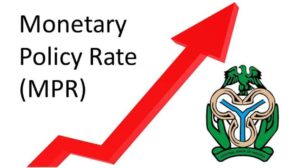Foreign Direct Investment vs Foreign Portfolio Investment: key differences

Foreign direct investment (FDI) and foreign portfolio investment (FPI) are two important ways through which capital can flow from one country to another. While they may seem similar, there are significant differences between the two. Understanding these differences is crucial for investors and policymakers alike, as each type of investment has unique benefits and risks.
This article will explore the key differences between FDI and FPI, and the implications of these differences for investors and countries.
What is Foreign Direct Investment?
Foreign direct investment (FDI) involves a direct investment in a foreign company, where the investor acquires a controlling interest in the company, either through a merger or acquisition, or by establishing a new subsidiary.
The investor exercises management control over the foreign company, and is therefore exposed to the risks and benefits of the company’s operations. FDI can be either greenfield, where the investor establishes a new subsidiary in the host country, or brownfield, where the investor acquires an existing company.
What is Foreign Portfolio Investment?
Foreign portfolio investment (FPI) involves the purchase of securities, such as stocks or bonds, in a foreign company or government. Unlike FDI, FPI does not involve management control of the foreign company, and the investor is not directly involved in the company’s operations.
Instead, the investor is exposed to the financial performance of the company or government and receives a return on investment in the form of dividends or interest payments.
The key differences between FDI and FPI
The main difference between FDI and FPI is the level of control and involvement that the investor has in the foreign company or government. With FDI, the investor has direct management control over the company’s operations, while with FPI, the investor only has a financial stake in the company’s performance. This means that FDI is typically a long-term investment, while FPI can be short-term or long-term, depending on the investor’s objectives.
Another key difference between FDI and FPI is the level of risk involved. FDI is generally considered a riskier investment, as the investor is exposed to the risks of the company’s operations, such as operational and market risks, as well as political and regulatory risks in the host country. FPI, on the other hand, is typically less risky, as the investor is exposed only to the financial performance of the company or government, and is not directly involved in its operations.
FDI and FPI also differ in their impact on the host country’s economy. FDI can have a significant impact on the host country’s economy, as it can bring in new capital, technology, and expertise, which can lead to job creation, increased productivity, and economic growth. FDI can also lead to the transfer of knowledge and skills and can stimulate domestic competition, which can benefit local firms and consumers. FPI, on the other hand, has a more limited impact on the host country’s economy, as it only provides financial capital to the company or government, and does not involve the transfer of technology or expertise.
Benefits and risks of FDI and FPI for investors
Foreign direct investment (FDI) and foreign portfolio investment (FPI) offer different benefits and risks for investors. FDI can provide investors with access to new markets, resources, and opportunities for growth. By acquiring a controlling stake in a foreign company, investors can also exercise greater control over the company’s operations and strategy, which can lead to greater returns on investment. FDI can also provide investors with diversification benefits, as they can invest in a range of industries and countries, reducing their exposure to risks in any one market.
However, FDI also carries significant risks for investors. FDI requires a long-term commitment of resources, and investors are exposed to operational, market, political, and regulatory risks in the host country. FDI can also be costly, as investors must often invest significant resources in building new operations, acquiring existing companies, or establishing joint ventures. Finally, FDI requires a significant level of expertise and knowledge, and investors must have the skills and resources necessary to manage a foreign subsidiary.
Foreign portfolio investment (FPI) offers a different set of benefits and risks for investors. FPI provides investors with access to a range of securities, including stocks, bonds, and other financial instruments, in markets around the world. FPI also provides investors with greater flexibility and liquidity, as they can easily buy and sell securities as market conditions change. Finally, FPI can provide investors with diversification benefits, as they can invest in a range of industries and countries, reducing their exposure to risks in any one market.
Implications of FDI and FPI for host countries
Foreign direct investment (FDI) and foreign portfolio investment (FPI) also have different implications for host countries. FDI can bring significant benefits to host countries, including new capital, technology, expertise, and job creation. FDI can also stimulate domestic competition, which can benefit local firms and consumers. Finally, FDI can lead to the transfer of knowledge and skills, which can support long-term economic growth and development.
FDI also has potential risks for host countries. FDI can result in the exploitation of local resources, labor, and markets, which can lead to social and environmental problems. FDI can also lead to the displacement of local firms and workers, particularly in industries that are dominated by foreign investors. Finally, FDI can lead to the loss of economic sovereignty, as host countries may become dependent on foreign investors for capital, technology, and expertise.
Foreign portfolio investment (FPI) also has implications for host countries. FPI can provide host countries with access to capital markets, which can help to finance economic development and growth. FPI can also provide host countries with diversification benefits, as they can attract a range of investors from different countries and industries. Finally, FPI can lead to greater financial stability, as it can help to mitigate risks and volatility in the financial system.
Finding the right investment strategy: FDI, FPI or both
Finding the right investment strategy depends on various factors, including an investor’s risk tolerance, investment goals, and expertise. Both foreign direct investment (FDI) and foreign portfolio investment (FPI) have unique benefits and risks that should be carefully considered before making investment decisions. Investors with a long-term horizon, greater resources, and expertise may prefer FDI, as it can provide greater control over a company’s operations and potentially higher returns.
On the other hand, investors with a shorter-term horizon, lower resources, and less expertise may prefer FPI, as it offers greater flexibility and liquidity. However, some investors may choose to combine both FDI and FPI in their investment strategy to diversify their portfolio and manage risk. Ultimately, finding the right investment strategy depends on each investor’s unique circumstances and investment goals.
Conclusion
Foreign direct investment (FDI) and foreign portfolio investment (FPI) are two distinct forms of international investment, with different benefits, risks, and implications for investors and host countries.
Understanding the differences between FDI and FPI is essential for investors and policymakers to make informed decisions about cross-border investment.
Don't miss a thing. Follow us on Telegram and Follow us on WhatsApp. If you love videos then also Subscribe to our YouTube Channel. We are on Twitter as MakeMoneyDotNG.





